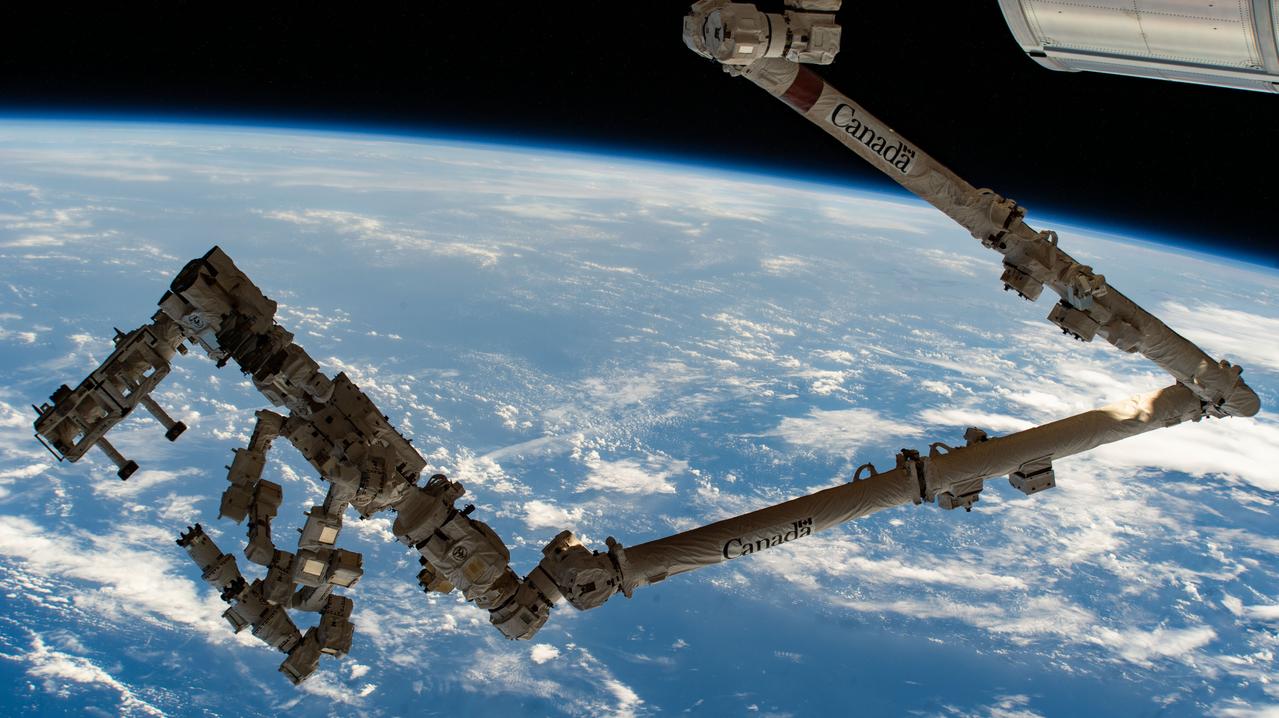
A space robot was just caught in action during a science experiment, high above Earth.
NASA astronaut Don Pettit took a short video of a Canadian handy-robot on the International Space Station (ISS). The long-running Dextre robot from the Canadian Space Agency (CSA) was moving a science payload on the ISS.
The video, which Pettit posted Monday (Nov. 25) on X, formerly Twitter, shows hours of science action with Dextre, which is managed by the company MDA Space. CSA and MDA Space also contributed the more famous Canadarm2, which performs a variety of tasks on the ISS — including capturing spacecraft, a use for which it was not originally designed.
Payload package deployment from the JAXA airlock using the Canadarm2 with the Special Purpose Dexterious Manipulator (SPDM). This timelapse shows the two smaller arms on SPDM grappling a materials exposure payload (MISSE) and moving it away. I especially like the sun angles… pic.twitter.com/41yCGNvDNINovember 25, 2024
Related: 'Spaceborne': Astronaut Don Pettit's amazing space photos (gallery)
The action Pettit captured shows Dextre working with the materials exposure payload, or MISSE. The MISSE series of experiments puts materials like fabric on the outside of the ISS to assess how well they stand up in the space environment, which includes large temperature swings and high radiation doses.
"I especially like the sun angles moving around the window frame like a 16-hour sundial. This time exposure represents about 10 hours," Pettit wrote in his X post.
Pettit has been busy doing space photography since his arrival at the ISS earlier in the year. (To be clear, the imaging is generally done in his spare time, after he's done with his science and ISS maintenance work.)
Some examples include a Jupiter-like ball of water, which Pettit created using food coloring. He also has been gazing at city lights and the aurora borealis, or the northern lights, on the Earth below.
Pettit also has been watching launches and landings of space missions. For example, he imaged the fiery reentry of the privately funded Polaris Dawn astronaut mission that returned to Earth on Sept. 15. He also caught the launch of SpaceX's Starship during its sixth test flight on Nov. 19.
CSA's robotic contributions to the ISS pay for astronaut seats and science; at 2.3% of the space station consortium, that works out to an astronaut flight roughly every six years. The next CSA mission there may launch as soon as 2025, with Joshua Kutryk on board the Boeing Starliner-1 spacecraft. CSA and MDA Space are also creating a Canadarm3 for moon work that funded Jeremy Hansen's seat aboard the Artemis 2 mission; that highly anticipated flight is slated to lift off in 2025 as well.







